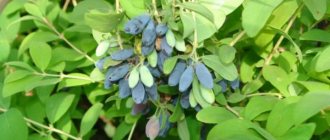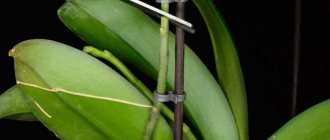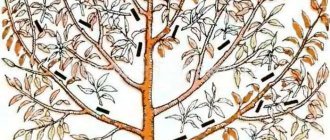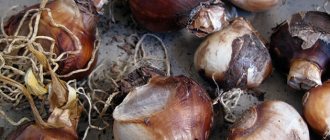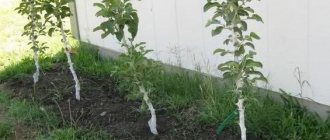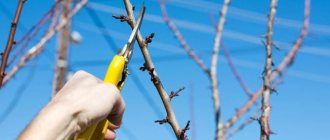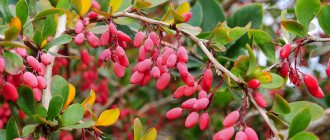Need for pruning
Pelargonium is pruned regularly; the choice of season (spring or autumn) is determined by flowering time and variety. This is necessary for:
- obtaining fresh shoots;
- variety propagation;
- formation of an even and dense crown;
- improving air exchange.
At the same time, old dry branches, shoots growing in the direction of the stem and interfering with each other, branches that lack foliage and inflorescences are removed.
Autumn pruning is more reasonable than spring pruning. At this time, the geranium is preparing to rest. The process prepares it, facilitates wintering, and promotes lush flowering in summer.
Advice from flower growers
To achieve lush flowering of geraniums in spring, you need to know the “character” of geraniums and its preferences.
- Geranium is a light-loving plant and should be kept on southern windowsills or provided with additional lighting during the flowering period.
- Geranium is a drought-resistant plant rather than a moisture-loving one, so excessive moisture leads to rotting of the root system. Watering is carried out 2-3 times a week as the top layer of soil in the pot dries.
- The temperature should not fall below 13-15⁰С. At lower rates, pelargonium stops laying buds.
- Timely autumn pruning will allow you to grow a compact geranium bush, which will delight you with abundant flowering in the spring.
Spring pruning of geraniums - video
Geranium pruning technology
When cutting, use a blade or a utility knife. When using scissors, they bend the shoot, causing damage to the tissue. Before starting, the instruments are treated so that infection does not enter the fresh cut. Remove old dried branches or densely overgrown shoots. The cut is made above the knot that faces outward. This is necessary so that fresh shoots grow and do not interfere with each other. After the procedure, it is sprinkled with antiseptics: charcoal, ash; in room conditions, cinnamon powder is used to disinfect and protect against pests.
To accelerate growth, the plant is fed with fertilizer containing nitrogen.
How else to help geraniums for lush flowering
In addition to pruning, plant care also influences the quality of flowering. To form buds, geraniums must receive enough moisture, light and nutrients. From time to time, even homemade geranium varieties need to be exposed to fresh air, this will benefit the plant.
Proper watering
It is necessary to water geraniums on the windowsill all year round, despite the fact that they have a period of relative dormancy in the winter. The features of its watering are as follows:
- The water should be soft, with a minimum content of iron, salts, lime and other impurities.
- The plant prefers melt or rain water at room temperature, but if this is not possible, you can improve the properties of the water by settling for 1-2 days.
- It is not recommended to water geraniums with warm water during the winter months; this may stimulate them to grow, which is undesirable.
- The amount of moisture received by the plant must be sufficient. In hot weather, the earthen ball is moistened abundantly, but stagnation of water should not be allowed.
- The pot must have a drainage layer and a drainage hole.
- At moderate air temperatures, the top layer of soil is allowed to dry slightly before the next watering.
On a note! Young plants with insufficiently strong roots are watered after the soil dries 1 cm deep. You can check the soil moisture using a match or toothpick.
Watering should be uniform, without sharp alternation of drought and abundant moisture. It is better to water the plant more often, but little by little. In autumn, the amount of moisture added is reduced, and in winter the plant is maintained with infrequent, scanty watering, just so that its roots do not dry out.
Feeding
Feeding for pelargoniums is used during the period of active growth - in spring and summer. Fertilizer is applied to the soil twice a month, an hour after watering. It is impossible to apply fertilizing to dry soil, otherwise the roots will burn. After flowering is completed, geraniums are no longer fertilized until early spring.
Nitrogen fertilizers are used at the beginning of the growing season to form a large amount of green mass. During the budding period, the plant needs to be given potassium and phosphorus. The nitrogen content in fertilizing should be reduced from this point on. It is best to use complex mineral fertilizers, which in addition to the main elements contain:
- manganese;
- iron;
- magnesium;
- calcium;
- zinc;
- copper;
- sulfur;
- boron
All drugs are applied in liquid form, the solution is prepared according to the instructions. Fertilizer is excluded 2 weeks before transplantation and for 1 week after. You cannot fertilize sick plants, their roots cannot fully absorb nutrients, and the condition of the flower will only worsen.
How to feed pelargonium for lush flowering: video
Place on the windowsill
The best place in an apartment for geraniums is a southern window sill, where there is always a lot of sun. However, the plant does well in partial shade. You need to pay attention to the appearance of the flower and its condition.
If during the summer heat the leaves of a geranium turn yellow and wither, it means it is hot. Move the flower pot deeper into the room at midday, and then return it to its place. If you are not at home at this time, simply shade the pelargonium with two layers of gauze or a piece of white paper attached to the glass.
In the garden, on the street
If you decide to decorate your garden or city flowerbed near your house with pelargonium, choose unpretentious varieties that do not require special growing conditions. For planting, it is recommended to select a well-lit area with light, well-drained soil. Clay soil is not suitable for geraniums, nor are wetlands. In the middle zone, pelargonium can be planted outside in early June, when the threat of frost will probably disappear.
When suitable conditions are created, geranium in the garden is transformed, becomes healthier and stronger, and blooms well. Its leaves and flowers acquire a rich color.
How to form pelargonium in the fall
After the end of summer, flower growers prepare the flower for wintering. Geraniums are pruned between September and November, after the last bud has dried. During this period, dry yellowed leaves, branches with no foliage and weak shoots stand out. The main stem is shortened by one third, fresh cuts are sprinkled with antiseptics.
If winter buds appear on the flower, they are removed. From late November to March the plant is dormant.
What to do to make the bush grow thicker?
On a note. In order for geranium to grow into a lush bush, its apical bud on the main shoot above the stem node must be pinched.
This stimulates the growth of lateral buds on the lower nodes of the stem. After this event, the seedlings will slow down their growth , but will begin to gain strength. The geranium will eventually take on a beautiful spherical shape due to the appearance of many side stems.
How to prevent the flower from stretching too much upward?
To prevent geraniums from stretching out, pinching should be done at the most important upper point of stem formation. If after this procedure the shoots begin to grow again from the upper axils of the leaves, they must be removed, then allowed to grow a little and pinched back again. During this time, the buds are removed so that the flower devotes all its strength only to the growth of side shoots.
What to do for lush flowering?
Only young shoots bloom in geraniums. Therefore, in order for it to develop quickly and bloom luxuriantly, young shoots must be pinched after the formation of the first 4-5 pairs of leaves. As a result, the remaining strong shoots will begin to actively grow and develop, turning into a lush crown with many flowers.
Step-by-step instructions for spring pruning geraniums
Held in the last days of February or the first days of March. To begin with, the florist decides on the shape he wants to give to the pelargonium. Then begins the procedure:
- processes the tool;
- reduces the center trunk by one third;
- removes dried branches and foliage, bare shoots or shoots growing towards the middle;
- treats the sections with an antiseptic.
The shoots are cut so that 2-3 buds remain below.
Follow-up care for geraniums includes:
- watering every two days;
- feeding with nitrogen-containing fertilizer;
- absence of drafts and spraying.
Choose a sunny place and, if possible, place it on the balcony or in the garden.
Reasons for pulling geraniums
The geranium was transplanted into a pot for the winter and brought into the room. The conditions on the windowsill are just right for her to rest, but she keeps stretching and stretching. There may be several reasons: there is not enough light and it is very warm and there is too much moisture for it.
Lack of lighting
Geranium loves the sun. And if there is not enough sun, it begins to “look for it,” that is, it stretches out and does not bloom. Perhaps such a disadvantage as the lack of flowers in winter can be survived (after all, it, like any living organism, needs rest, after all, it bloomed all summer), but many gardeners do not want to put up with the spoiled shape of the bush. And they place their favorite on a south or southwest window. And on cloudy days, even artificial lighting is turned on.
High temperature in winter
In summer, geranium can withstand any temperature, but in winter, when the dormant period begins, the optimal temperature for it should be 15-18oC. At higher temperatures and lack of light, geranium shoots will grow rapidly.
Pot too big
Geraniums have a strange feature: they do not like large pots. Until its roots fill the entire space in the pot, the stems will move upward, and buds will not form. In addition, the “free” soil can become acidic, and the root system of pelargonium will suffer and rot.
Overwatering
Geranium does not need abundant watering even in summer, and even less so in winter. If the soil is wet, the plant will grow shoots; to prevent this from happening, watering is reduced to a minimum in winter. Water only when the top layer dries out significantly.
Need for pruning and rejuvenation
To get a beautiful, neat geranium bush, it must be trimmed or pinched in a timely manner and constantly (at least three times a year). You should not wait until the shoots stretch out and the leaves remain only at the top.
The geranium itself does not produce lateral shoots, although there are “dormant” buds at each node. Timely pruning will wake them up. Thanks to it, new shoots will form, the bush will be more lush and there will be even more flowers.
For a young flower, you can simply pinch the tops of the shoots to form a crown.
- Pinching is done approximately half a month after transplantation.
- After 4-5 leaves are formed on the shoots, a new pinching is carried out.
As soon as the bush of the desired shape is formed, stop pinching.
There are 2 types of pruning:
- Basic trimming. It is carried out in the spring, immediately after the resting phase. Pelargonium is not yet quite ready to grow and form shoots, therefore, it will survive the stress of pruning more easily. The shoots are pruned to produce more flowers. Also in the spring, during the main pruning, a bush of the desired shape is formed.
- Autumn pruning. At this time, pruning is more of a decorative nature, since it does not have any effect on flowering. Everything that has bloomed, dried out, or withered is cut off. A favorable time for such a procedure would be the beginning of October, just before moving the plant into the room. There is no point in pruning before, only if the flower is sick. In this case, the diseased areas are removed.
You can pinch a young plant all year round, excluding the resting phase.
Important! There are varieties of geraniums that bloom all year round. In this case, the plant must be formed all year
Other reasons
Geraniums can also stretch out because there is old soil in the pot. Pelargonium needs to be transplanted, young annually, and then once every 2-3 years. When replanting, you need to choose the right pot. It should be 1-2 cm larger than the previous one.
If geraniums are not properly cared for, various fungal diseases can develop. If uncharacteristically soft and elongated shoots are detected, the roots of the plant should be examined. If affected by fungus, treat with fungicides and plant in new soil.
Formation of a standard tree
To form a strong trunk, it is necessary to attach it to a flat vertical support. The side shoots that appear on it are cut off after the formation of the fourth leaf on them. The leaves are kept on the stem itself. When it has grown to the desired size, the foliage is removed and the top is regularly pinched. This contributes to the formation of a dense crown. Geraniums will begin to bloom no earlier than in a year.
The flower is placed in a warm, bright place where there is no direct rays of the sun. Abundant watering and frequent fertilizing serve as accelerators of the process.
Why and when is pinching needed?
Geranium, or as it is also called pelargonium, is a perennial plant that blooms long and luxuriantly. The flower has many medicinal properties and is practically not afraid of insect pests, which it repels with its specific smell. We find geraniums not only in gardens and flower beds, but also on many window sills.
Thanks to its unpretentiousness and beautiful flowering, geranium has gained great popularity in our country. But so that this beautiful flower remains compact and attractive. And it didn’t take up half the window sill, you need to properly care for it, do timely pinching and pruning (read about how to care for geraniums at home in a pot so that they bloom, and from this article you will learn about recommendations for caring for a flower in open ground). By using these simple geranium shaping techniques, you will achieve two important goals:
- Timely pinching will allow the plant to bloom beautifully and profusely.
- In addition, pinching and pruning geraniums will rid the plant of diseased and weak branches that slow down the growth and development of the flower.
Important! Pinching delays the flowering period of geraniums, since the nutrients that should be supplied to the upper growth point are spent on the formation of new side shoots.
Therefore, this procedure can be used as a regulator of the flowering time of a flower. You need to stop pinching the plant after it has acquired the desired shape and bushiness.
The essence of the procedure
The principle of pinching is to remove the growing point from which a new branch arises. Simply put, the very top of the geranium stem is cut off. This procedure causes the trunk to sprout more and more new shoots, and the flower becomes more and more branched.
Young pelargonium should be pinched several times a month while the flower grows in height and gains strength. Usually all leaves on the stem are removed, except for 5-6 of the largest and strongest leaves.
You can pinch out growing points in any month of the year, except winter, when the plant needs to rest and should not be disturbed (you can find out how to care for home geraniums in winter here).
Formation of royal geranium
A large variety with lush blooming scarlet flowers that appear for only one season a year. Royal geraniums are pruned in the fall, in September-October, when they are preparing to rest. The process technology is followed. First, reduce the stem by one third. Next they move on to the crown: remove dry yellowed leaves, buds, shoots that lack foliage or grow towards the central trunk. All sections are processed.
In winter, the plant is placed in comfortable conditions and not disturbed until spring. If fresh shoots appear on it, pinch them off with your hands.
With proper care, royal geraniums will bloom in April.
Why doesn't pelargonium bloom?
Geranium is unpretentious, but if certain growing conditions are violated, it refuses to bloom. The most common reasons for this:
Rare feeding. The plant is demanding of potassium fertilizers, but practically does not need organic ones. Frequent or heavy watering. Geranium cannot tolerate excess moisture. It is easier for her to endure drought than to swim in water. The pot doesn't fit the plant. A large volume of soil forces the plant to build up its root system and delay flowering. If the sprout is small, then several shoots can be planted in one container. Neighbors will help you quickly cope with the task of filling the pot with roots and moving on to flowering. The bush has not been pruned for a long time. Without timely pruning (spring or autumn), you may not wait for flowering. Bad light. Geranium does not like northern or northwestern window sills. She begins to reach up, trying to catch an extra ray of sunlight. Therefore, it is necessary to change the location of the plant. You need to make sure that the geranium does not end up next to large and bushy neighbors. Incorrect wintering conditions. Ideal conditions for keeping a flower in winter: a cool room (up to 15°C), no drafts, moderate watering and lighting for at least 5 hours a day.
How to make geraniums bloom
It also happens: everything is done correctly, but there are still no flowers. You can try shock therapy. Nature arranges it in such a way that any living creature strives to continue the race when there is a threat to life. Therefore, it is worth trying to create unfavorable conditions for pelargonium so that it hastens to bloom and preserve its genus. To do this, you can use several methods:
Radical spring pruning, when a minimum of eyes (2 or 3) are left. Organization of a cool and hungry winter. Summer transplanting from the room to the garden bed or to the balcony. Increasing iodine levels.
Geranium does not like moving from one window sill to another. When the first buds appear, it is better not to touch the pelargonium and leave it in its original place. You can’t even turn the other side towards the sun; the plant can shed its inflorescences.
In order for geranium to bloom, you can try to create unfavorable conditions for it.
Mr. Summer Resident warns: the most common mistakes when pruning
Often, when pruning plants, gardeners do not think about the fact that they can cause harm. In order for the process to benefit and improve the health of the flower, follow the rules:
- when the situation changes, geraniums are allowed to adapt to the new place and only then are they pruned;
- Be sure to wash and disinfect all instruments, otherwise you can get infected and the pelargonium will die;
- after complete pruning “under the stump”, water a little at a time and only when the layer of soil has dried by 4-5 cm, otherwise the roots will begin to rot from oversaturation with moisture.
Main reasons
Geranium is an unpretentious plant, so it can be planted by novice gardeners. Over the years of selection, hundreds of varieties have been bred, which differ not only in color, but also in flower shape. This variety quickly made geraniums popular.
Specimens without flowers look unattractive
The plant is correctly called pelargonium, but this name did not stick. Some varieties can be grown in the garden. Zonal species bloom almost all year round. Their peculiarity is that the flowers have several shades.
A compact geranium with an unobtrusive aroma is Fragrant. The most beautiful is the Royal Pelargonium. Flowers can reach a diameter of 15 cm, with a dark spot on each petal.
Important! At home, geranium blooms from March to September. To do this, you need to create the right conditions
Correct pinching
Timely pruning of weak and elongated branches allows you to save the plant’s strength. Pinching allows you to stimulate the appearance of side shoots, which can also bloom.
Pruning should be done in early spring. To do this, the upper part of the stem is removed. It can be rooted and sprouted separately
Young plants (up to two years old) are pruned once every 3-4 months, since at this stage it is important to achieve the correct formation of the crown
Pinching is carried out with a clean stationery knife or scissors. If the branches have become too long, they can be trimmed a little more. It is better to place the pot with the plant in a sunny place, as the light will allow it to recover faster.
Without pinching, geraniums look unsightly, as the stems can become very stretched.
Important! Special attention should be paid to the condition of the stems. If they are affected by diseases or pests, they need to be cut off along with a healthy area of 3-4 cm
Incorrect pruning
Many people want to achieve wild flowering of geraniums and use various tricks to achieve this. Any pruning must be carried out according to the rules, otherwise it will harm the plant.
The shoot is cut only by 1/3 and the uppermost part is removed. It is this technique that helps awaken the lateral buds. Sometimes a person can overdo it and remove most of the stem. In this case, the geranium may stop growing for some time.
Important! If there is a fear of removing too much, then it is enough to remove 2-3 cm of the top of the shoot. It is impossible to correct incorrect pruning; all you can do is wait for it to grow stems
In this case, you can find out how to fertilize geraniums, since fertilizing stimulates growth
It is impossible to correct incorrect pruning; you can only wait for it to grow stems. In this case, you can find out how to fertilize geraniums, since fertilizing stimulates growth.
cramped potty
Timely replanting of geraniums allows the root system to develop correctly. If there is a lack of soil, a deficiency of nutrients occurs and the geranium will not have enough strength to form buds.
An overly large pot will also do harm, since then the plant will begin to actively grow root mass, rather than flower stalks. Determining the size of a normal container is simple - it should be 1-2 cm larger than the earthen clod.
You can determine the tightness of the pot visually. Roots will be visible above the soil's surface and may also grow through drainage holes.
Important! Geraniums up to three years old are replanted every year in early spring. This must be done before flowering begins.
Plants older than three years are replanted once every two to three years.
Temperature violations
Making geraniums bloom is not so easy, since the formation of buds occurs only when special conditions are created.
A period of rest is necessary to stimulate flowering
In spring, summer and autumn, the temperature should be maintained at 23-25 °C, and in winter it should be lowered to 16 °C. Such changes will allow the plant to expend less energy and accumulate nutrients in the stems and leaves.
During the dormant period, geraniums are rarely watered and receive light for at least 5 hours a day.
Important! When winter passes, you can begin to gradually increase the temperature and the amount of watering. The appearance of the plant can indicate the correctness of the regime.
Red foliage indicates that the geranium is freezing and needs to be placed in a warm place
The appearance of the plant can indicate the correctness of the regime. Red foliage indicates that the geranium is freezing and needs to be placed in a warm place.
What is pruning and why is it needed?
The procedure for pruning geraniums involves shortening long shoots and removing old stems. This must be done not only in order to get new flower stalks, but also to achieve a beautiful shape for the plant. If pruning is not carried out, the lower leaves of the plant begin to fall off and the branches become bare, as a result of which the flower loses its beauty.
Geranium has “dormant” buds at almost every node , but it is not capable of producing lateral shoots without human help. Pruning awakens the “dormant” buds, as a result of which new shoots with flower buds are formed.
In addition, controlling the length of shoots and the degree of growth of the bush is useful for:
- stimulation of long and abundant flowering;
- giving the plant an even compact shape;
- accelerating metabolism in the plant and improving its quality;
- facilitating wintering of geraniums;
- improving aeration and lighting;
- prevention of diseases.
Attention : Another advantage of pruning geraniums is that as a result the gardener receives planting material in the form of new cuttings.
If the geranium bush is very large, after radically cutting off the shoots, the plant will devote all its energy to the growth of new stems and leaves, which is why the inflorescences will appear late or not appear at all. To avoid this, for large flowers you only need to shorten diseased, long branches without leaves .
Purpose and benefits of spring haircut
Spring pruning is easier than autumn pruning and brings more benefits to the plant, but it should be done with caution. During this period, pelargonium starts sap flow and rest ends. In order to decide whether a flower needs to be pruned, its appearance is assessed.
Necessity
To understand whether geraniums need pruning, you should pay attention to its appearance. The bare trunk is not pruned, but if the shape is neat, the plant can be pruned in spring. At the same time, I remove all stems growing inward, old branches, side shoots that violate the shape. In ampelous species, all long branches devoid of foliage and inflorescences are removed.
Carrying out pruning
What does pruning do? It favors:
- long flowering;
- growth of lateral branches;
- formation of a smooth, beautiful crown;
- obtaining fresh planting material for planting new plants.
Scheme of the procedure
First of all, you need to decide what shape to give the flower. After this, you can begin the procedure according to the generally accepted scheme:
- manipulation tools should be disinfected. Boiling water, alcohol or an antibacterial agent are suitable for these purposes;
- remove all yellowed leaves and damaged branches;
Trimming with scissors
- shorten the tall stem, in which case new shoots will begin to grow from it, and the plant will take the form of a tree;
- remove lower side shoots;
- trim off all old crooked stems, leaving stumps. Subsequently, bushes are formed from these stumps.
Please note! There is an unspoken rule for pruning geraniums - no more than a fifth of the shoots must be removed, otherwise the flowering period of pelargonium will be significantly delayed. After the procedure, the cut sites are treated with ash or cinnamon; you can use crushed activated carbon, an alcohol solution or brilliant green.
Care after pruning
In order for the geranium bush to recover quickly after pruning, it needs to create somewhat gentle conditions:
- ensure normal and acceptable air humidity by periodically spraying;
- slowly and carefully adjust and normalize the watering regime;
- provide the geranium with maximum light by placing it on the most illuminated windowsill (preferably southern);
- create the necessary, slightly warmer conditions by raising the temperature (compared to winter conditions) by 3...5 °C;
- feed with any universal nitrogen-containing fertilizer for flowering indoor crops (Gera, Agricola, etc.).
Table: caring for geraniums after spring pruning
| Temperature | An increase in temperature of 3–5°C is allowed (compared to winter). |
| Lighting | Intensive, preferably south window. |
| Watering | A gradual return from moderate winter watering to normal. |
| Top dressing | Spraying with Epin solution (once a week, three times a month). |
| Air humidity | No promotion required. |
How not to harm flowers
Pruning geraniums is a simple procedure, especially if you follow the correct sequence and remember the basic needs of the plant, including seasonal ones. Nevertheless, there are times when a bush dies due to rash actions.
The main mistakes of novice flower growers
The process of removing geranium stems is quite simple, but sometimes novice gardeners make mistakes, which can result in an unsatisfactory appearance of the pelargonium or even its death. Among the most common mistakes are:
- pruning not on time . Not all types of geraniums tolerate winter pruning. In addition, removing stems during flowering can cause inflorescences to fall off;
- removing too many shoots . Trimming more than half of the stems at one time can lead to stress, after which the geranium does not grow or bloom for a long time;
- pruning high above the leaf node . After such events, the top of the stem dries out, even dies, which is why the appearance of the flower is lost;
- reusable haircut . Too frequent pruning of stems leads to inhibition of the development of buds and buds.

